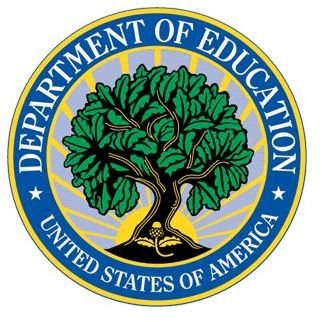Latest Information about Unsubsidized Loans for College
What are Unsubsidized Loans for College?
To have a better appreciation of the reforms on student loans in college, we will first satisfy queries regarding information about unsubsidized loans for college.
In as much as free college money to meet the entire cost of attending college was often insufficient; most students resorted to Stafford loans to cover their unmet financial needs as a means of completing their college education. Stafford Loans were considered better alternatives to private or alternative loans because the repayment of these loans could be deferred until after the student graduated or after he withdrew from this loan program, with a 6-months grace period.
The students borrow the amount needed to cover their unmet financial needs, and this amount is subsidized by the federal government, and serviced by private banks or private financial institutions. As a subsidized loan, all the interests accruing to the loan while under deferment will be paid by the federal government to the privately owned service providers.
In addition, the student may borrow not for financial need and will be granted as an unsubsidized loan. This means all interests accruing to this portion of the student’s loan will be added to the total amount of deferred loan to be paid by the student, 6 months after his graduation from college.
However, due to the recent economic downtrend, most of the students preferred not to enter college anymore due to the high costs of education. Despite the availability of subsidized and unsubsidized loans, parents and student were wary of the economic impact of the loans they will have to pay after graduation. On top of that, there was also the uncertainty of even landing a job within the 6-months grace period.
The Student Aid and Fiscal Responsibility Act (SAFRA)- Direct Loan Program

Under the new law known as the Student Aid and Fiscal Responsibility Act (SAFRA), the funding of financial assistance in the form of loans to college students will become more affordable by terminating all government funds infused in privately owned banks or financial institutions to service the loans for college students. Instead, federal student loans for college will come directly from the US Department of Education to be delivered and served by non-profit service providers. The said service providers will be paid only in terms of administrative costs under performance-based contracts. The Secretary of the Dept. of Education will reserve the right to increase, decrease, terminate or reallocate the service provider’s allocation based on their performance. This means all interests accruing therein for unsubsidized loans are guaranteed to be low and stable during the time that the loan is in deferment.
Starting July 01, 2010, all new federal student loans will come from the Direct Loan program. In relation to this, the following programs will be terminated: The Federal Family Education Loans, Federal Loan Insurance Program, Federal PLUS Loans and Unsubsidized Stafford Loans for Middle-Income Borrowers.
These changes will not affect the manner of applying for the loan; hence, the students will still be required to submit their approved FAFSA to determine the student’s financial needs.
Student’s Loan Eligibility, Maximum Amount of Loan and Amount of Subsidized / Unsubsidized Loans

Under the Direct Loan Program, loans whether subsidized or unsubsidized, will be awarded as part of a package that will cover the Cost of Attendance for college education.
The student’s loan eligibility will be established by the school after considering all the financial aid that the student is entitled to. The Cost of Attendance less the total financial aid awarded will be the student’s eligible loan amount.
Even if the student does not have a demonstrated financial need, the student will be allowed to borrow according to his eligible loan amount but up to the following annual limits:
-
Dependent first –year student enrolled for the full academic year, the maximum loan amount is $5,500 wherein only the amount $ 3500 will be availed as subsidized while the remaining $2,000 will be unsubsidized.
-
Dependent second –year student who still has to complete at least a full year of academic studies, the maximum loan amount is $6,500. The subsidized portion is up to $4,500 only while the remaining $2,000 will be unsubsidized.
-
Dependent third-year or fourth year student who still has to complete at least a full year of academic studies, the maximum loan amount is $7,500. The subsidized portion is up to $5,500 only while the remaining $2,000 will be unsubsidized.
-
Independent first –year student enrolled for the full academic year, the maximum loan amount is $9,500 wherein only the amount $ 3500 will be availed as subsidized while the remaining $6,000 will be unsubsidized.
-
Independent second –year student who still has to complete at least a full year of academic studies, the maximum loan amount is $10,500. The subsidized portion is up to $4,500 only while the remaining $6,000 will be unsubsidized.
-
Independent third-year or fourth year student who still has to complete at least a full year of academic studies, the maximum loan amount is $12,500. The subsidized portion is up to $5,500 only while the remaining $7,000 will be unsubsidized.
-
A graduate or student with professional degree can borrow up to $20,500 wherein the subsidized portion is only up to $8,500 and the remaining $12,000 will be unsubsidized.
The above-stated figures are only the maximum loan amount that the student can borrow under the Direct Loan Program, for subsidized and unsubsidized loans. However, the student cannot borrow more than his loan eligibility or the Cost of Attendance minus all financial aid financial aid; hence, it is possible that the student may not be eligible to borrow up to the maximum loan amount.
Repayment of Loans for Subsidized and Unsubsidized Loan under the Direct Loan Program
All Direct Loans will be repaid to the US Department of Education’s Direct Loan Servicing Center. The student will be provided with detailed information about four (4) repayment plan options during entrance and exit counseling.
Six months after the student graduates, or leaves school, or drops from the enrollment, he is expected to begin repayments even if he or she did not receive any notice about the first payment due date.
-
For the subsidized portion of the student’s loan, the student will not pay interest during the six months given as grace period. However, all repayment schedules for the principal amount of the subsidized loan should be paid on their due dates and thereafter; otherwise, payment will be considered in default and shall be charged with interest from date of default to date of payment.
-
For the unsubsidized portion of the students’ loan, the student will not be expected to pay the total amount due during the 6-months grace period; however, the interest will continue to accrue on the unsubsidized loan. The student has the option to pay the interest during the 6-months grace period or opt to add the 6 months interest to the principal loan amount, which are the principal loan plus all interests that were deferred during his college attendance.
-
However, the student may choose to pay the monthly interest accruing to the unsubsidized portion of his loan while attending the school. This way, only the principal amount will be under deferment until after his graduation.
Consequences of Default under the Direct Loan Program
A student who expects to have trouble making repayments on his loan on the due dates they are expected, has to notify his Direct Loan lender immediately. The lender will provide him with several options for deferment plan or forbearance, the approval of which will depend on the student’s reasons.
If the student will not make any actions to coordinate with the lender or if his reasons do not make him eligible for deferment or forbearance, his loan will be considered as in default due to non-payment on the scheduled dates.
If a student is in default, his school, the Direct Lender, his guarantor, or the federal government can take the following courses of action against the student:
- Report his defaulted loan to the credit bureaus and let it be reflected in his credit report. This will affect the student’s chances of getting a car loan or a housing loan approved.
- The student will become ineligible for federal student aid in case he decides to go back to school for further studies.
- Request the student’s employer to deduct the loan payments from his paycheck.
- Any income tax refund that he may have in the future may be withheld and applied as payment for the loan.
- Additional late fees and collection cost will be added to the unpaid loan.
- The student can be sued.
This is the latest information about unsubsidized loans from college under the new Direct Loan Program of the Student Aid and Fiscal Responsibility Act (SAFRA).
Reference and Image Credits
Reference Materials
- https://edlabor.house.gov/blog/2009/07/student-aid-and-fiscal-respons.shtml
- https://www.direct.ed.gov/applying.html
- https://www.studentfinancedomain.com/student_loans/unsubsidized_stafford_loans.aspx
- https://studentaid2.ed.gov/getmoney/pay_for_college/award.html
- https://studentaid.ed.gov/PORTALSWebApp/students/english/repaying.jsp
- https://www.gossone.com/worlds/uss/health-care-reform-bill-h-r-4872-summary
- https://www.whitehouse.gov/sites/default/files/10326-higher-ed.pdf
Image Credits:
- Wikimedia Commons
